
Welcome to Day 5 of my countdown towards my online course Capturing Family History in a Book of My Things, which begins on January 16, 2022. [Update: The course is currently not open for enrollment, so please sign up for my newsletter if you’re interested in being notified when it opens again.] Each day I am sharing a story about a family object, including tidbits of my process putting it together. I hope that’ll give you some ideas and inspire you to come up with your own stories.
When I moved back to the States as a grad student in 1988, I took my great-grandfather’s sewing machine with me.
Upon arrival, I unwrapped the original U.S. motor my dad had carefully packaged in 1964 newspaper. (He had fitted the machine with a German motor when we moved to Germany.) I took off the German motor, attached the old American one and voila, the machine worked again on U.S. current.
Side note on process: I still have that box with the German motor in one of my closets. It would have been lovely to share a picture of it in this post, but alas, I couldn’t find it where I thought it was going to be. I had to remind myself that turning over my closets is not the point of this project! It’s more important to get out of the gate with the story. I can always update it later when I stumble across that box.
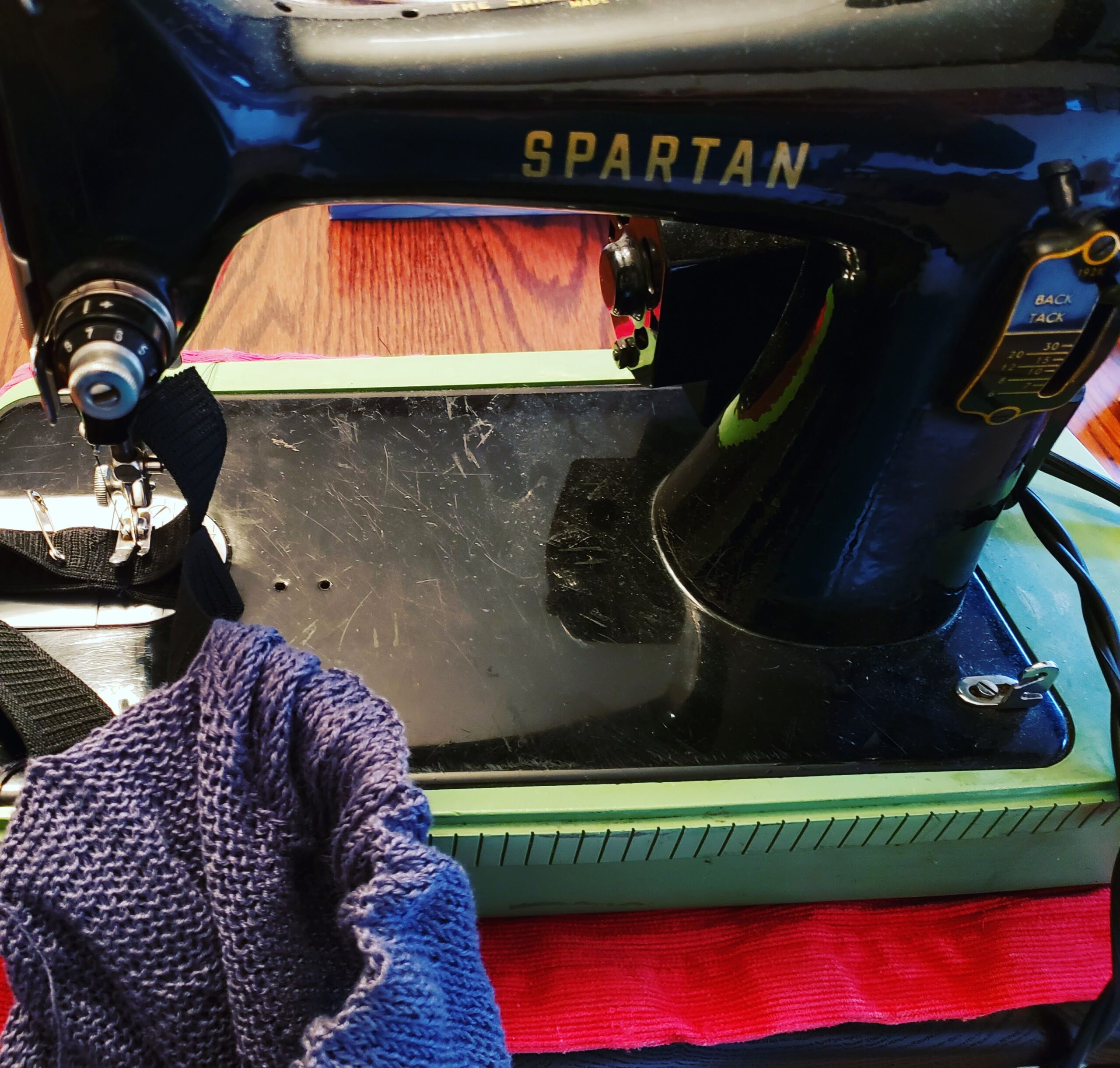
Every time I take out this sewing machine, I’m proud that I’m still using it, a machine that’s older than I am.
A device that those who came before me have sat at, hunched over, rattling away.
It used to belong to my great-grandfather, Great-Grandpa Keller, my mom’s paternal grandfather.
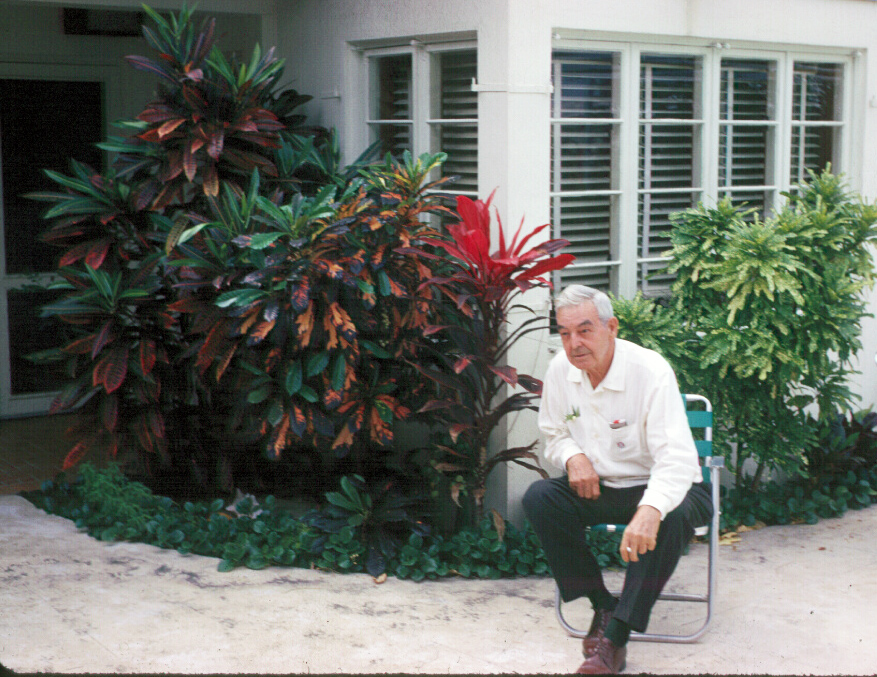
My great-grandpa in front of his house in Florida, 1966
He gave the sewing machine, compact as it was with its mint green carrying case, to my mom when she moved to Germany with her young family in 1964.
Mom in turn taught me how to sew a skirt on it when I became interested in my teens. Later she gave it to me when I moved back to the U.S. Like my steamer trunk, the sewing machine is one of those family items that has traversed the Atlantic with me.

My great-grandpa with my brother in his lap, and his son, my grandfather, with me. Florida, 1966
It is a basic Singer machine that only sews back and forth. No fancy zigzag stitch or anything like that!
According to Sewingiscool.com, the Singer Spartan sewing machine “is a great little sewing machine. […] In the 50s and 60s the machine sold for around $60 as it was a model that was designed to compete with the cheaper imports that began to flood the market in those decades. It came with a plastic base and no cover. But what you got was a very good sewing machine. In the words of the experts, it is and was a workhorse that did great stitches no matter what fabric you ran past its needle. Another good aspect of this model is that you can turn it into a hand crank with ease and use it just about anywhere.”
Singer has long been synonymous with sewing machines, and I appreciated learning more about the company on silverbobbin.com:
“Isaac Merritt Singer founded I.M. Singer and Co. in 1850. Contrary to popular thought, he did not invent the first domestic sewing machine. Instead, he made modifications to a patented design invented by Elias Howe. Singer did design and patent excellent modifications to the accepted design. But it was his business model that made the company a success. What did he do that was so different? He launched the first popular installment payment plan for his machines. This made sewing machines affordable to the average person. Before this, only factories and companies owned sewing machines.
Singer also marketed the need for a sewing machine in every home. The company continued to develop accessible and more portable models over the years. The company also used a hefty door-to-door sales campaign and frequent model updates to keep customers buying new models.”
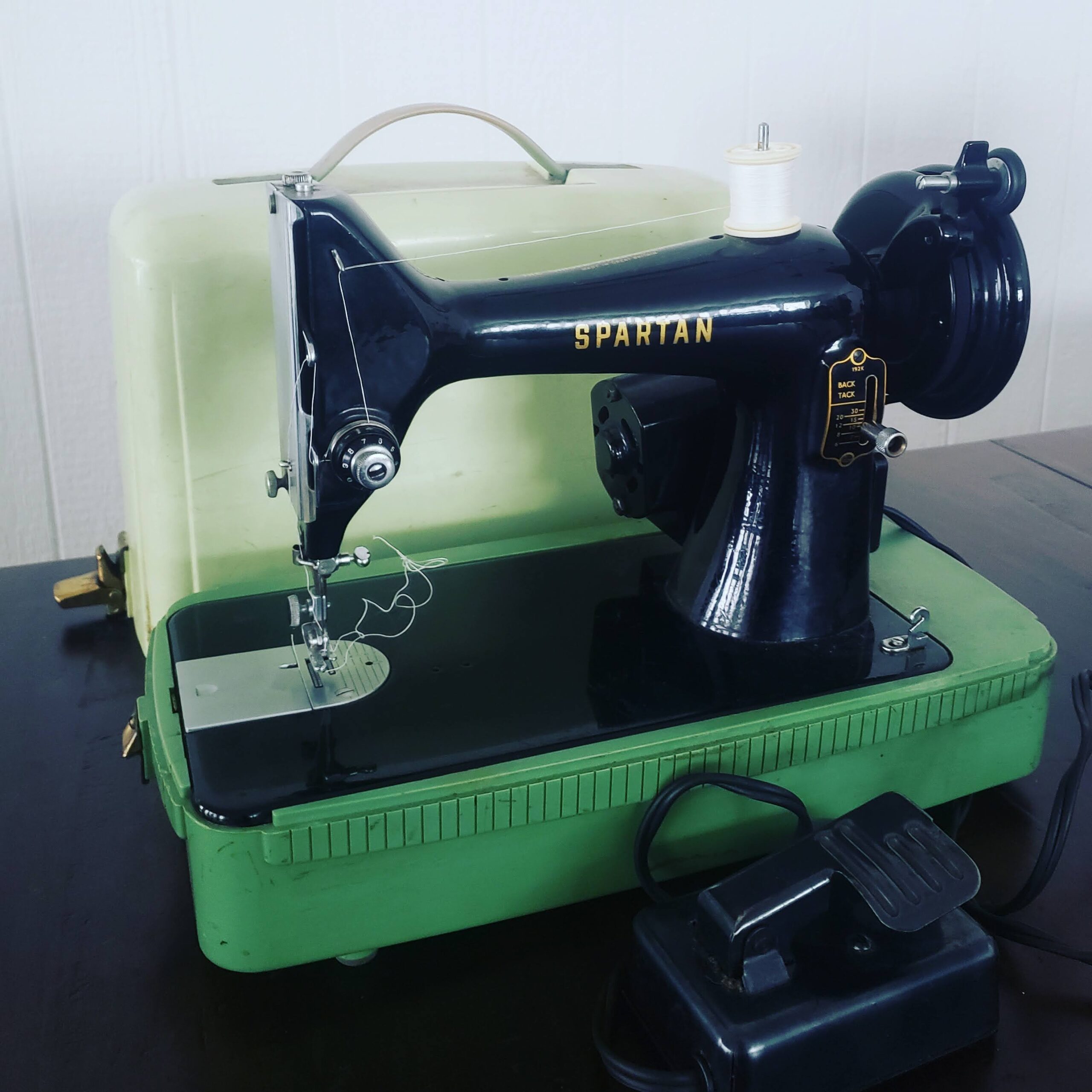
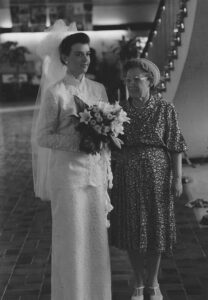
Me in my wedding dress, made on this basic Singer machine
My Singer Spartan, with its practical case, is certainly portable but quite heavy.
In my teens and twenties, tall as I was, store-bought clothes usually didn’t fit me. Plus I had a taste for fashion I couldn’t afford, so I made almost all my own clothes with this sewing machine. That included a leather coat (It is a heavy duty machine!) and my wedding dress. Alas, these days I mainly shorten pants with it or sew a hanging strip on a dish cloth.
My mom’s story goes that her grandfather bought that sewing machine in the late 1950s to sew underwear for his wife.
She had been incontinent towards the end of her life. She died before him, leaving him a widower for more than a decade. I always found it rather remarkable that such a manly man as my great-grandfather sat down to sew underwear. What a loving gesture! On one of my aunt and uncle’s visits, I brought out the sewing machine and asked my uncle whether he had heard that same story.
He hadn’t. Instead, he told me other stories about my great-grandparents. For instance, that they didn’t speak to each other for a few years because of some falling out. They lived together, ate together, slept together, but didn’t talk to each other. Remarkable, eh?

My great-grandparents, late 1950s or early 1960s
But, my uncle said, that story of the sewing machine is entirely possible, as my great-grandmother was indeed “having problems” in her later years.
Sewing machines were not exactly on my uncle’s radar as a young man so he might not have heard about the sewing machine’s original purpose or paid any attention.
“So,” he said generously, “I think you own that story.”
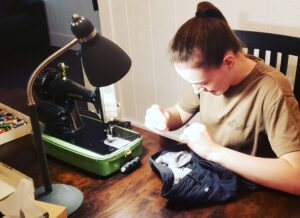
These days, my daughter is the fifth generation to be sewing on that machine.

Annette,
I love this! I also made all my own clothes as a teen and designed for friends and family after college graduation. Thanks for the inspiration to write more about this!
Yay! That’s the idea!
That machine certainly endures.
Indeed it does!